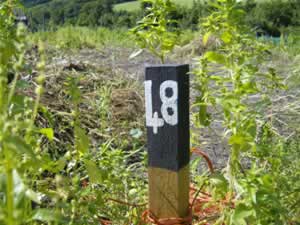The history of allotments
Click here to return to home page
The history of allotments
The history of allotments goes back over 200 years to the enclosure legislation of the 18th and 19th centuries.
Enclosure Acts
The word word 'allotment' refers to land being allocated as allotments under an enclosure award (The enclosure act was used by by richer land-owners to prevent the poor grazing their animals on common land).
The most significant of the Enclosure Acts was the General Enclosure Act 1845 which required that provision should be made for the landless poor in the form of 'field gardens' limited to a quarter of an acre. At this time, allotments were confined to country areas.
Victorians
The modern 'allotment' came about during the 19th century. During this time, many people from rural areas moved to live and work in towns. Many of the migrants were very poor and according to the Victorians, this resulted in degenerate behaviour. The Victorians decided that allotments would provide an alternative to drink and other unmentionable pursuits for the poor.
The spread of town and city allotments was intensified by the growth of high-density housing. Often these houses were back to back, and did not have gardens.
World War I
World War I prompted a huge proliferation in the number of allotments - from 600,000 to 1,500,000. This was to encourage the growth of produce for the war effort. However, when the war came to an end, many of the temporary allotment were returned to their original use.
World War II
World War I again increased the role for allotments as a major provider of food. This was prompted by the blockade from the German U-boats which prevented food arriving to the UK and the fact that many farm-workers who had been involved in food production went to the war.
Allotments became a common feature in towns and cities. Gardens were also turned over to food production. 'Dig for Victory' posters were displayed everywhere, and food production from allotments rose to 1,300,000 tonnes per year.
Post war allotments
When World War II came to an end, the need for allotments to produce food for the country diminished. Other demands were made on areas allocated to allotment use. There are now only about 250,000 allotments left.
Allotments are now under the control of local or parish councils. Allotments are allocated by Act of Parliament, and Councils have a legal obligation to provide the land. If Councils wish to use the land for other purposes, then they are supposed to provide land of similar quality in a suitable location.
In practice pressures on Council finances means that many sites are sold for building development.
Allotments today
With the increase in interest in organic food, and the trend towards high density housing, the demands for allotments has been increasing in the past few years.

